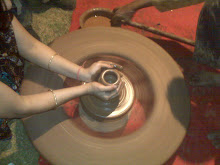Part II :
2000 - KBC THRUSTS STAR PLUS TO NUMERO UNO POSITION
The year 2000 will be remembered for a single show that dominated the Indian television industry and went on to switch the fortunes of some media companies. Kaun Banega Crorepati, the Amitabh Bachchan hosted game show based on Who Wants to be a Millionaire, not only became the most-watched programme on private satellite television but also catapaulted Star Plus into leadership position.
On the back of the success of Star Plus, Rupert Murdoch built his media empire. If Subhash Chandra had tasted success all through these years since Zee launched, 2000 was a turning point in Zee's history. Chandra's dream of creating a media company that would march into the convergence era faced severe threat and the internal weakness of his organisation stood exposed.
It was clearly Murdoch's year. After divorcing his business from Zee, his Star Group acquired a 26 per cent stake in the Rajan Raheja-owned Hathway Cable & Datacom for an estimated $50-60 million. This marked a re-entry of Murdoch into cable after selling his 50 per cent stake in Chandra's Siticable and gave him a presence in a cable network which had around one million subscribers.
Sony Entertainment Television, which was competing fiercely against Zee at the time, also floundered as it came under the attack from three Star Plus programmes - Bachchan's show which gave away prize money of Rs 10 million, flanked by the Balaji Telefilms' produced soaps Kyunki saas bhi kabhie bahu thi and Kahaani ghar ghar kii.
The year saw the entry of Kerry Packer's Channel Nine in a joint venture with HFCL. The HFCL-Channel Nine JV sealed a deal with Prasar Bharati, agreeing to pay a whopping Rs 1200-odd million for a three-hour prime time band on the floundering DD Metro channel. This revenue model was unsustainable, as would be proved later when Channel Nine withdrew from renewing the contract on the same commercial terms. DD Sports was also launched as a pay channel, trying to cash in on the India cricket rights which Prasar Bharati bagged in a successful bid for five years.
It was also the year that saw the birth of a Hindi news channel, Aaj Tak, from the India Today stable. This was to later fuel a news channel boom in the country. B4U, promoted by LN Mittal, Kishore Lulla and Binani, was also launched during the year.
There was activity in the regional channel space. Down south, Sun Network continued to rule supreme. Zee made a foray into regional language broadcasting with the launch of four channels under the Alpha brand - in Marathi, Punjabi, Gujarati and Bengali. Rathikant Basu, ending his stint as CEO in Star India, launched the Tara group of regional channels. ETV Network also made a foray into regional language broadcasting.
Cable TV was getting high valuation on the back of ambitious convergence plans. Intel forked out $59.23 million to pick up 3.3 per cent stake in Hinduja-owned IndusInd Media & Communications. Chandra's Siticable was valued by HSBC at $1.9 billion. MSOs announced upgradation plans, but the investments were more promised than made. The cable TV industry grew to over 30 million subscribers in the year, up from around 28 million a year ago.
Telecom operators like Reliance, Bharti, BPL and Spectranet also began to dream of the convergence play. Hopes on broadband emerged with players like NumTv.com, broadcastindia.com, sharkstream.com, homelandnetworks, and spectranet.com surfacing.
On the policy front, Ku-band DTH broadcasting was permitted after a three year ban. Guidelines were issued but a detailed note on how DTH will roll out mysteriously did not see the light of day. Uplinking and ownership of earth stations by private broadcasters from Indian soil were opened up.
No final word was heard on the broadcasting bill however. The idea of a convergence bill was mooted, but it was caught up in a tussle between the IT, telecom and I&B ministries as to who would play the steering role for convergence.
The door was open for private players to own and operate communication satellite systems. The local INSAT system was offered for commercial use by private agencies.
Sun TV and Eenadu TV were the first players to get permission to enter the fray. They set up their own earth stations and were granted uplinking facilities.
Meanwhile, Chandra's ambitious Agrani satellite project ran into export licence issues under US munitions restrictions imposed after India's nuclear explosions.
(source: www.indiantelevision.com)




No comments:
Post a Comment